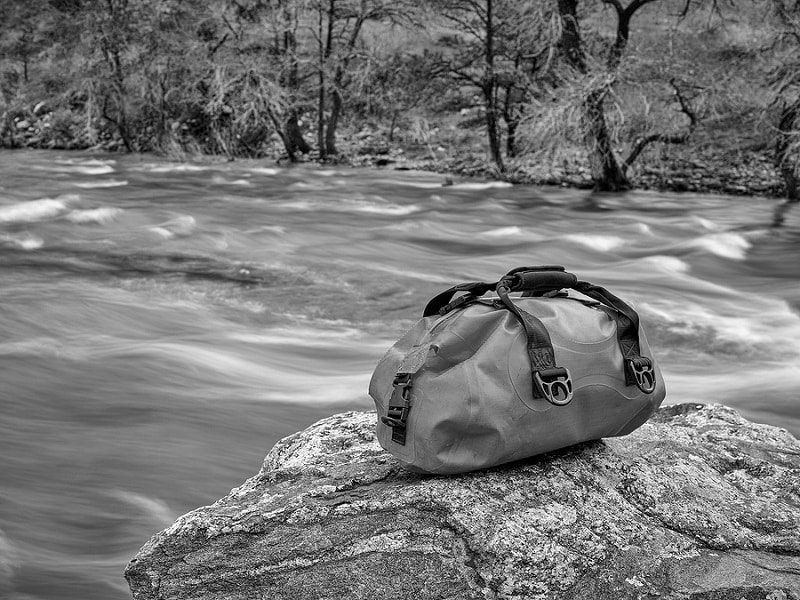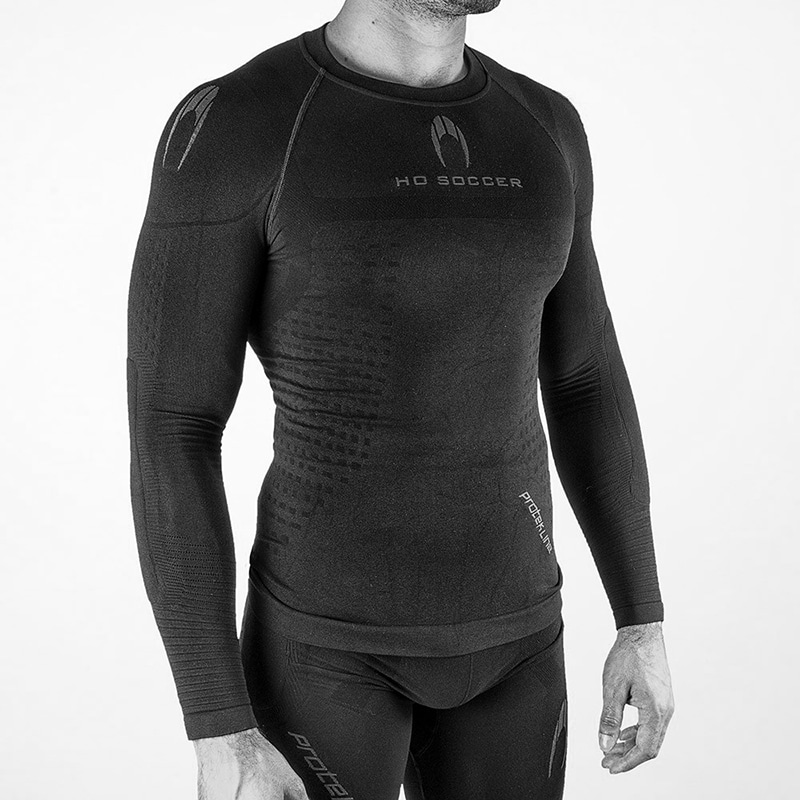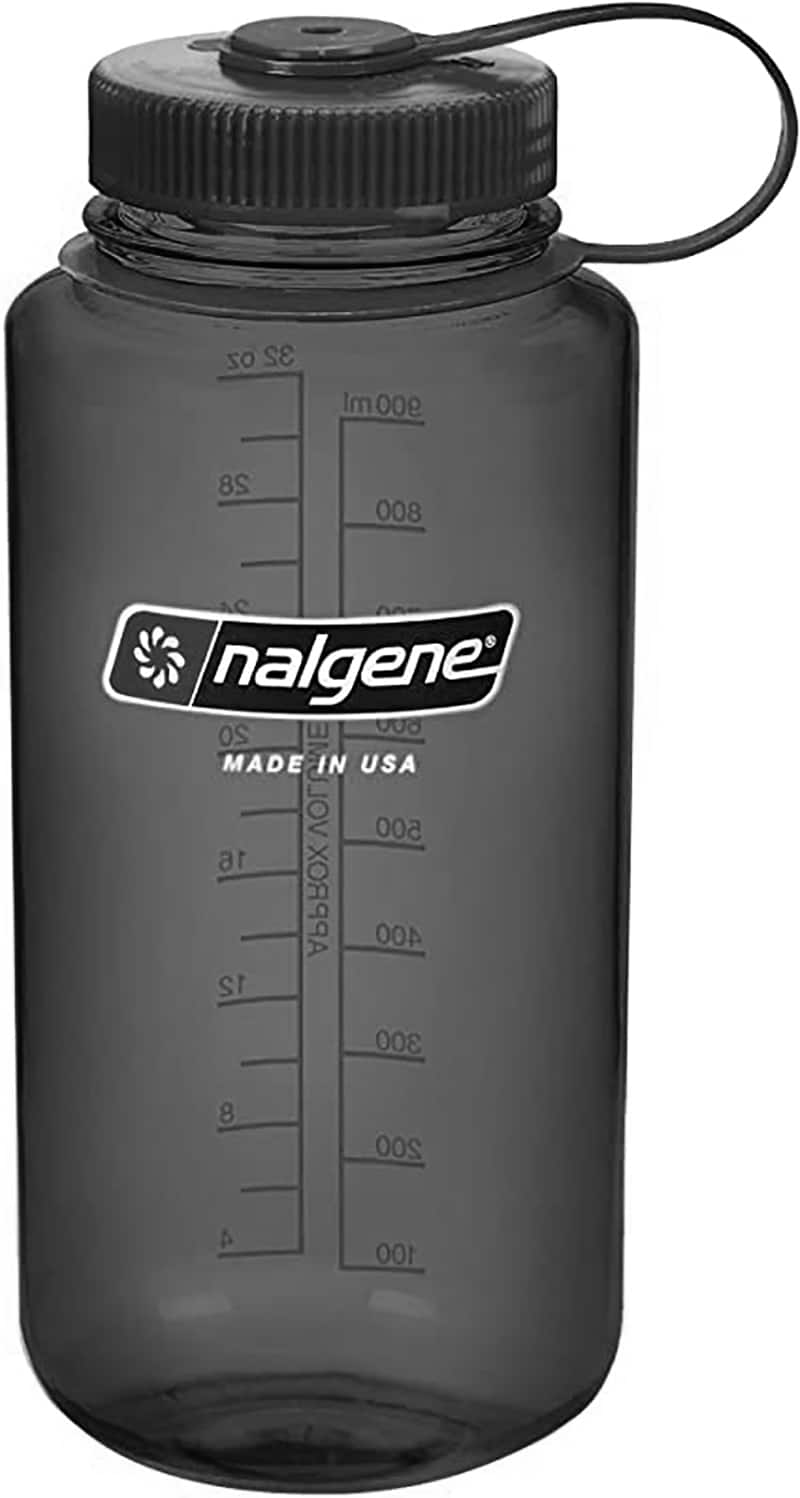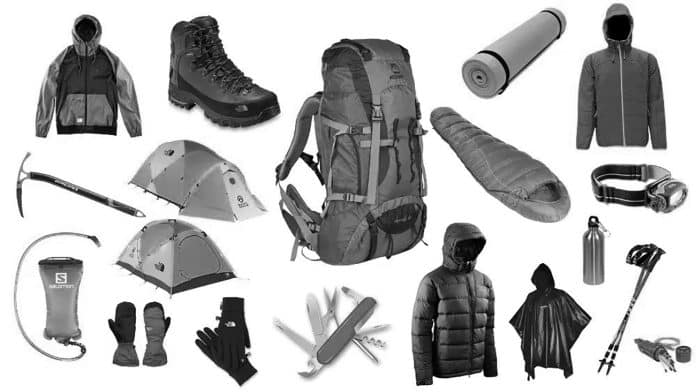Critical Guide – The Ultimate Climbing Kilimanjaro Gear List
A Must-Have Guide for Anyone Climbing Mount Kilimanjaro.
You’ll need to pack essential gear and supplies to Mount Kilimanjaro to ensure your safety and comfort. We’ve put up a list of everything you’ll need to pack for your Kilimanjaro climb.
At Kilimanjaro’s peak, surrounded by glaciers, snow, and ice, there are five unique climate zones, each with its challenges for hikers; you must be prepared for all kinds of weather, from bright and windy to rainy and icy.
Thanks to our generous sponsorship, cooking facilities, food, and other communal things are all given free. Your possessions will be transported by porters in a duffel bag, and you’ll carry your daypack while hiking.
Checklist of Kilimanjaro Climb Gear List
Plan your outfit meticulously before embarking on a climb. As a result, we propose that you include the following in your Climbing Kilimanjaro gear list.
- A top base layer that’s exceptional.
- A bottom base layer.
- No less than four to five different pairs of undies.
- Three to four short sleeves.
- A thermal trekking insulated pants.
- A few long-sleeved hiking shirts.
- One to two couples of hiking trousers.
- An insulated winter jacket.
- A Polartec Fleece Jacket.
- A Waterproof or hard-shell jacket.
A Set of Tools That are Part of the Essential Gear List for Kilimanjaro Climb
- Your Daypack: A porter will carry your primary gear mounting up to 15 kilograms in a duffle bag during the day while you will carry your daypack. If you don’t have one, you’ll need one. The recommended sizes are between 30 and 40 liters. Recommendation: Osprey daypacks. Other recommendations to consider.
- Your Waterproof Duffle Bag: We recommend an 80-90L duffle bag to transport your essential items. Larger rucksacks with a capacity greater than 65 liters are another option. Other recommendations to consider.
- A Sleeping Bag: Bringing a 4-season or -20 Deg C sleeping bag and compression bag is necessary. We recommend sleeping bags from Mountain Hardwear or The North Face. Sleeping bags can be rented from our Tanzanian experts. Other recommendations to consider.
- A Pair of Trekking Poles: This crucial climbing Kilimanjaro gear list can reduce the strain on your joints by as much as a quarter. They’re perfect for scaling Kilimanjaro! Trekking poles from Black Diamond are our preferred choice. Other recommendations to consider.
- Three Liters Water Bladders or Bottles: These options include 2 x 1.5-liter wide-mouth Nalgene bottles or 2 × 2-liter platypus bottles and a 1-liter water bottle. Mount Kilimanjaro prohibits the use of disposable plastic bottles. Other recommendations to consider.
- A Neck Gaiter or A Scarf: Kilimanjaro can be dusty, so bring a neck gaiter or scarf. We recommend that you bring a bandana or neck gaiter with you. Hoo-Rag or Buff Headwear is the most flexible option. Other recommendations to consider.

Climb Kilimanjaro Gear List: Hiking Head-Gears
- Knitted or Fleeced Beanie-style Hats: These are ideal for the cold weather. Beanies from Berghaus, The North Face, and Columbia are excellent choices for those who enjoy spending time outdoors. Other recommendations to consider.
- A Sun Hat: If you don’t plan on wearing a neck gaiter, a wide-brimmed sun hat with a neck cover is your best bet. Other recommendations to consider.
- A Head-Lamp: You’ll want a bright head-lamp for late-night restroom runs and, more importantly, summit night. Petzl is a major manufacturer of high-quality and affordable head-lamps. Other recommendations to consider.
- A Sunglass: Ensure you have sufficient UV protection, as the sun’s rays can be particularly intense at 4,500 feet. Mountain sunglasses made by Julbo are a great option, but a high-quality brand that protects your eyes from harmful UV rays would suffice. Other recommendations to consider.
Hiking Gears for Legs and Arms
- Pairs of Warm Gloves or Mittens: The cold nights and the summit push need the use of heavyweight, insulated, and water-resistant gloves. Brands like Black Diamond and The North Face are good to start. Other recommendations to consider.
- Pairs of Lightweight Gloves: We recommend wearing lightweight fleece or quick-drying fabric gloves to keep your hands warm on the lower slopes. High-quality yet ultra-lightweight gloves are made by both Berghaus and The North Face. Other recommendations to consider.
- A Pair of Trekking Booth: We recommend wearing mid-weight trekking boots with enough ankle support. In addition to Salomon, we also suggest Hi-Tec, Scarpa, and Merrell. Other recommendations to consider.
- A Pair of Training Shoes: You may want to bring a pair of sandals or training shoes to wear around the campsite after a long day of hiking. Other recommendations to consider.
- Pairs of Socks: Three to four pairs of outer socks and two to three pairs of liner socks. One pair of thick thermal socks for the summit night is also recommended. Merino wool, Bridgedale, and Smartwool in sock material are the best options. Other recommendations to consider.
- A Pair of Gaiter: When the weather is damp, muddy, or dusty, gaiters can help keep your pants clean. Other recommendations to consider.
Shoulders and Arms or Upper Body Climbing Kilimanjaro Gear List for Hiking

- A Thermal Base Layer: Merino wool is ideal for this. We recommend the Icebreaker brand for this. Other recommendations to consider.
- A Pair of Short-sleeved Shirts: Two pairs of short-sleeved shirts that are lightweight and moisture-wicking. Several well-known names in the outdoor industry, such as Icebreaker, Columbia, Under Armour, and Berghaus, come highly recommended. Other recommendations to consider.
- A Pair of Long-sleeved Shirts: Make sure your long-sleeved shirt is light or medium-weight and has a moisture-wicking fabric (x2). Berghaus, Icebreaker, and Under Armour make wicking trekking shirts that keep you cool and dry in the mountains. Other recommendations to consider.
- A Pair of Softshell or Fleece jacket: Kilimanjaro requires a fleece or soft-shell jacket with a mid-weight Polartec fleece. Fleece manufacturers Berghaus, The North Face, and Helly Hansen are outstanding. Other recommendations to consider.
- A Pair of Insulated Jackets: You need a good down or Primaloft jacket to keep you warm during the night and on the summit. You should check out The North Face, Arcteryx, Rab, and Mountain Hardwear. Other recommendations to consider.
- A Pair of Hardshell Outer Jackets: That is water and wind-resistant. Goretex is the material of choice. The Berghaus, North Face, Mountain Hardwear, and Arc’teryx are also good brands. Other recommendations to consider.
Hiking Gears for Legs
- Pairs of Leggings: These are a thermal or fleece-based foundation layer for your limbs. Merino wool is preferable. The brand Icebreaker comes highly recommended. Other recommendations to consider.
- Pairs of Hiking Trousers: Light or medium-weight hiking pants (x1) are the best to consider for your Climbing Kilimanjaro Gear List. There is a potential for pants that can be shortened into shorts. We like the Columbia lines and Craghoppers. Other recommendations to consider.
- Pairs of Hard-shell Trousers: You’ll need a pair of these to protect yourself from the rain and wind. Goretex would be perfect. As far as outerwear goes, The North Face, Patagonia, and Arc’Teryx are all fantastic. Other recommendations to consider.
A Few More Random Tidbits for Mount Kilimanjaro
- An Adaptor: Charge your gadgets in hotels before and after the hike with a plug adaptor. 230 Volt and 50 Hertz are the standard voltage and frequency in Tanzania. A type D or G power socket is used for the rooms. Other recommendations to consider.
- Spare Batteries & Cameras: A high-quality, lightweight point-and-shoot camera like the Panasonic Lumix is recommended unless you are an experienced photographer. Other recommendations to consider.
- Sunscreen and Lip-Balm: With a high SPF rating. Other recommendations to consider.
- A travel-size Toothbrush and Toothpaste: Very essential. Other recommendations to consider.
- Snacks: Calorie-dense energy bars and dried fruit are some of the favorite go-to snacks to include in the Climbing Kilimanjaro Gear List. It’s good to add an isotonic drink powder to your water to enhance the flavor and help you get your electrolytes. Other recommendations to consider.
- Earplugs: Those who have trouble falling asleep because expeditions to far-flung high-altitude bases amplify snoring! Other recommendations to consider.
- Hand sanitizer and wet wipes: Keeping clean on Kilimanjaro is a challenge, and hand sanitizer and wet wipes come in handy a lot. Other recommendations to consider.
- Pee bottle: A pee bottle is recommended for females, but it is not a necessity. Other recommendations to consider.
The Kilimanjaro Packing List: This is a Must-Read
Your primary duffel bag will be carried by a porter. Kilimanjaro and Mount Meru have tight restrictions on the weight of this pack, which cannot exceed 15 kg or 35 pounds. An additional porter will be needed if your luggage is too heavy or you have a lot of bags.
Waterproof stuff sacks should be used to store clothing.
To begin with your Climbing Kilimanjaro Gear List, you’ll need a daypack with at least one bottle of water and your camera’s gadgets, binoculars, and rain gear. Your primary luggage won’t be accessible until the end of your day’s hike, so pack any additional goods you may need.
Cold temperature affects the life expectancy of battery packs, so come along with spare batteries.
Bring essential climbing gear, especially your boots, from the plane if your luggage is delayed.
You may want to bring your guides and porters some antique winter clothes as a thank you gift.
Additional Clothing and Equipment for Your Climbing Kilimanjaro Gear List
Cotton should not be used in your inner layer because it is heavy and does not shed moisture well. You’ll want something waterproof but breathable in the outermost layer.
You’ll need clothes for hiking, sleeping, and resting during the day. Temperature swings necessitate the use of multiple layers.
Breathable, hand-washable, light, and quick-drying are all desirable qualities in clothing.
No cotton at all! Cotton soon becomes saturated due to its inability to wick away moisture.
Don’t bring jeans if you’re going to be hiking.
For experienced hikers, layering your clothing is a well-known technique for keeping warm and dry. Focusing on a few fundamental principles simplifies things considerably for newcomers:
- When you get to camp, immediately change into dry clothing.
- Moisture should be wicked away from your skin by your base layer.
- Insulation and wicking properties are provided by your mid-layer.
- In cold weather, your outer layers keep the wind and rain off you while keeping you warm.
Hypothermia or even frostbite can set in if you sweat and your base layer does not quickly remove the sweat.
Unpredictable and quick weather changes can be found on the mountain. Low clouds, fog, and mist can produce a damp and chilly hiking environment even when it is not raining. Even on a sunny day, the wind chill may chill you to the bone.
As your body heats up, the layers closest to your skin must have the ability to remove sweat. You don’t want to be sweaty and warm while moving, only to turn bone-chillingly frigid when you take a break.
Kilimanjaro climbing Gear List: Outfit Recommendations
Ensure your underwear has antibacterial properties and “flatlock” seams to prevent chafing.
Base layers are essential, and the best option for odor control and breathability is merino wool or a blend of merino wool and synthetic fibers.
Take an additional layer of clothing to wear while you sleep.
It’s good to wear “convertible” hiking pants on lower slopes when the weather is often warm enough for shorts.
You’ll need some excellent winter hiking gear; make sure it’s breathable.
Make sure taking off these waterproof pants with full-length zips is a breeze.
Insulation layers made of modern-day technical fleeces like Polartec are excellent.
Those who have a favorite hard-shell jacket, such as a ski jacket, make sure it is big enough to fit over your other layers.
For your Climbing Kilimanjaro gear list, it is crucial to make sure you have a down jacket with you at all times. This will come in handy both during the summit bid and in the evenings at the campground when you’ll be able to feel the chill more.
Rain gear should be as lightweight as possible.
Gloves are essential for two reasons: keeping you warm and blocking off the sun. Ensure that the inner glove fits snugly inside your thermal gloves or mittens before coming.
100% UV protection and ‘wraparound’ type sunglasses are necessary. It is more likely that ice and snow will reflect sunlight at higher altitudes.
Wear a thermal hat and a cap that shields your neck from the sun’s harsh rays because your head loses heat.
Climbing Kilimanjaro Gear List; Boots and Poles for Hiking
Your shoes are perhaps the most critical piece of gear you’ll need. Hiking boots should be well-worn, fit well, particularly with thick socks, and allow you to walk for extended periods comfortably. If you don’t already have a favorite pair, shop around and avoid purchasing online; shopping should not be rushed.
Boots with good ankle support and good waterproofing are the best choice for this type of activity. You won’t be using crampons. So you won’t need a full-on mountaineering boot. Wearing sneakers or “trainers” outside of camp is prohibited.
Bring a spare pair of laces and a sturdy, semi-rigid sole for your hiking boots. The Salomon GTX boots are a great example of a typical Kilimanjaro hiking boot, and they come highly recommended.
Because gaiters prevent debris, mud, and mountain scree out of your boots, they’re an excellent choice for hiking. In addition, they keep the bottom of your panties clean with their anti-microbial properties.
Don’t skimp on the socks you wear. It would help if you kept your feet dry by wearing socks with an outer layer that provides comfort and warmth and an inner layer that helps keep your feet dry. Cotton socks should be avoided at all costs.
Trekking Poles: Should You Use Them or Not?
Hiking poles are a personal preference; however, we recommend them to help with balance and fatigue. Whether you choose to buy or rent a trekking pole, it’s best to get some practice with it at home before coming.
Proper Illumination From Head-Lamps & Other Lighting Sources:
For your Climbing Kilimanjaro gear list, We suggest a compact head-lamp with an intense beam. The toilet tent, other campground areas, and getting to and from the summit tent will be accessible via this medium at night. It’s hard to go wrong with Black Diamond or Petzl. Because of the freezing temperatures, it is essential to bring extra batteries to replenish the unusually short-lived ones.
Some hikers use a mini-Maglite flashlight they carry in their tent at night.
Sleeping Proceedings
The nights on Kilimanjaro may get quite frigid. After a long day of hiking, you’ll begin to feel the chill in the air. You are welcome to bring your own or borrow one of ours. Sleeping bags rented out are thoroughly cleaned at the end of each trip.
A four-season, 0F, and -15F sleeping bag is required if you bring your own. Consider bringing a sleeping bag liner, whether you’re renting or yours, to keep out mountain dust and debris and provide a bit of added warmness.
Inflatable pillows are not required; most hikers use their clothing as a pillow, but this is purely a matter of personal preference.
Climbing Kilimanjaro Gear List; Sleeping Gear You’ll Need
- Temperature-rated sleeping bag with -15 degrees Fahrenheit to 0 degrees Fahrenheit.
- If you desire, you can bring your sleeping pad or mat, but we provide one.
- A sleeping bag’s interior lining; for extra warmth and a rented sleeping bag.
- You’ll also need a compression sack for a sleeping bag.
The best warmth-to-weight ratios, lightweight, and compact, down sleeping bags are the ideal option. A waterproof compression sack is essential for keeping them dry. Due to their tight fit to the body, mummy-shaped sleeping bags provide better insulation than rectangular sleeping bags. A hood is required to keep the head and neck from losing heat.
Provisioning a foundation for your sleeping bag, we provide a thin mattress or a mat, but if you’d prefer extra cushioning or if you have a preferred hiking pad, feel free to bring it along with you.
Carrying Hiking Bags and Packs:
When you reach camp, our porters will have your primary duffel bag ready for you. You’ll have everything you need for the day’s trip in your daypack.
If you’re looking for a duffel bag that is both waterproof and sturdy, the North Face Basecamp is a great option. Even though it’s water-resistant, we strongly recommend using waterproofed stuff sacks or packing cubes while transporting your gear.
Shoulder straps and hip belts should be adjustable to make your daypack feel good on your back. Pick one that fits well, has compartments to hold a hydration bladder and water bottles, and is large enough to hold rain gear, several layers of clothing, and other necessities you’ll need throughout the day.
If your daypack does not come with a built-in rain cover, double-check and buy one separately.
Climbing Kilimanjaro Gear List; Hydration and Snacks
- Hydration reservoir of two to three liters; Camelbak, Platypus, or similar.
- One or two wide-mouthed 1-liter water bottles; Nalgene or something similar.
- Recipe for a powdered electrolyte or sports drinks that can be mixed with water.
- Small chop snacks of two to four energy bars a day are reasonable estimates.
- Water purification pills or a filter pen is a choice; we provide boiling or filtered water for your use.
While climbing Kilimanjaro, staying hydrated is essential. It is dangerous to your health and your ability to adjust if you are severely dehydrated. As a courtesy, we provide filtered water to all of our climbers, and we strongly advise them to do so instead of pausing every few minutes to sip directly from a bottle.
Two Nalgene bottles with broad mouths are suitable for keeping water in your tent and for usage during rest periods. Wide-mouth bottles are the best option to keep your water from freezing as you ascend.

When you’re ready to go to sleep, fill a wide-mouth Nalgene bottle with hot water, secure the lid, and use it as a “hot water bottle; alternatively, the water can be used the following day.
It’s good to bring along a flavorful electrolyte mix because water can become monotonous. For a quick energy boost on your hiking expeditions, consider carrying energy bars, trail mix, and chocolates. Caffeine is a no-no, so avoid it.
Climbing Kilimanjaro Gear List; Self-Care and Satisfaction
The following list might be used as a starting point for further exploration.
- Antibacterial “wet wipes” are a great way to keep yourself clean while climbing Kilimanjaro without the luxury of a shower.
- The sun’s rays are more powerful; thus, sunscreen is essential.
- For your daypack and duffel, bring two rolls of toilet paper. Transport is made more effortless by removing the cardboard middle.
- When it comes to your hygiene and grooming needs, you’ll want to stock up on everything from toothpaste and brush to hand cream to deodorant, amongst others like:
- “Baby wipes” and “hand sanitizer wipes” and antibacterials.
- Prescription drugs you take consistently.
- Purell is an antibacterial gel hand sanitizer.
- A fingernail brush.
- A pair of nail clippers.
- In-ear earplugs
- Sunscreen with an SPF of at least 40+.
- A microfibre-based towel that dries fast.
- For the nightly calls of nature, keep a pee bottle handy.
- Miniature torch (optional).
- A Headtorch.
- A little folding knife (often referred to as a Swiss Army Knife or “Leatherman”).
- Glasses or Lenses.
- One to two toilet paper rolls; packing will be easier if the cardboard core is removed.
- A camera, phone, or iPod.
- Reserves of battery power.
Kits for Health Care
It’s recommended that you bring add some Climbing Kilimanjaro Gear list supplies to treat minor wounds and blisters, even though our guides are well-equipped. Even if you know what to bring, it’s always best to check with your doctor or a healthcare professional before coming.
First Aid Kit for Yourself
- Pinch plasters in a variety of shapes and sizes.
- An antibiotic cream or ointment.
- Band-Aids and Elastoplast can be used to treat minor wounds and scratches.
- Ibuprofen or Paracetamol from over-the-counter pain remedies.
- Aquaphor, a skin-healing ointment.
- Immodium for treating diarrhea.
- Anti-nausea medication prescribed by a doctor.
- Diamox; for users.
Climbing Kilimanjaro Gear List Preparation for the Kilimanjaro Expedition
Make your plans far in advance of the event. Do not procrastinate till the eleventh hour. Look for deals and discounts from Amazon, REI, Backcountry, and Moosejaw on the goods on your list that you don’t already have. Steep & Cheap is an excellent place to get previous year’s clothes at a considerable discount.
Knowing where everything belongs in your duffel bag and daypack can be helpful on those hasty chilly mornings when you’re having a hard time getting out of bed, so practice.
Try hiking with poles and a daypack to see how you like it. Experiment with different clothing layer combinations by removing and changing your daypack.
Before your climb, plan your activities so that your accommodation will have room for your excess baggage.
Never be hesitant to ask a question. We’ll be happy to answer any questions, so please don’t hesitate to contact us if you have any.
A Few More Random Tidbits for Your Climbing Kilimanjaro Gear List
Your travel documents should be with you at all times. You’ll need a passport and visa, travel insurance, essential vaccinations, and a yellow fever certificate for those transiting via a yellow fever area.
Consult your doctor for concerns about malaria and other shots you’ll need shots.
In 2019, Tanzania banned all single-use plastic bags. As a result, bring no plastic bags of any kind.
Questions?
Please let us know via the comments area, email, or the live chat us if you have any questions or concerns; we’re here to oblige.
For more articles related to Things to Do in Tanzania (Zanzibar), click here!
































